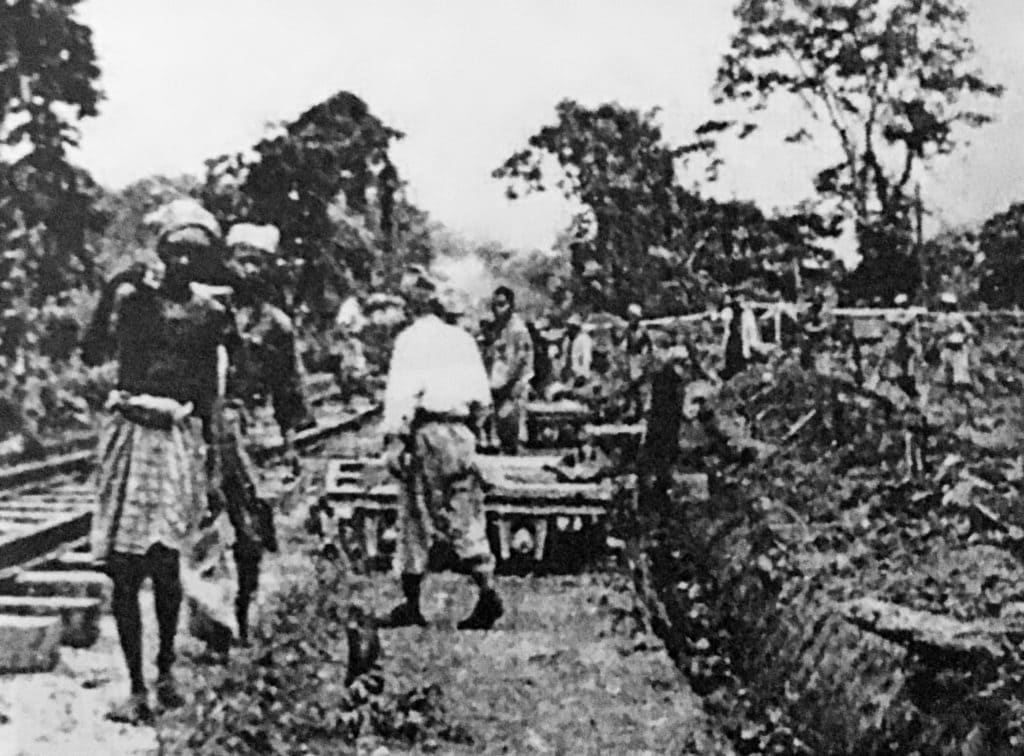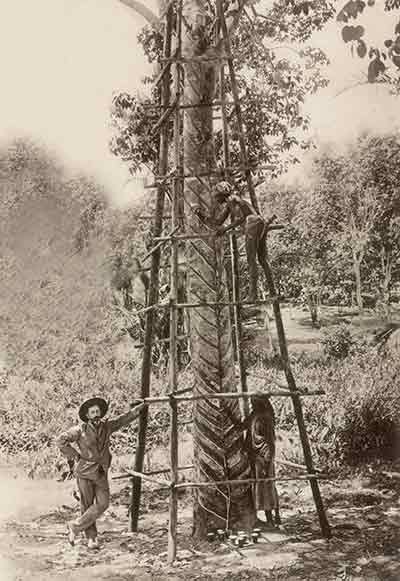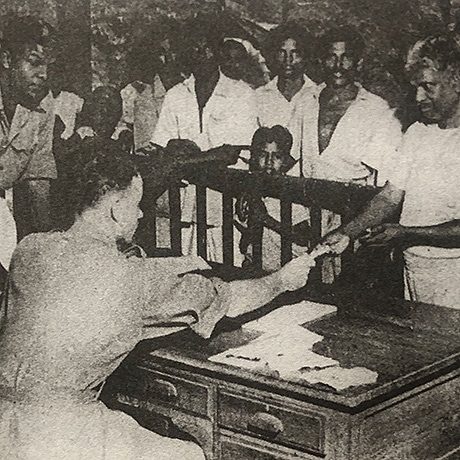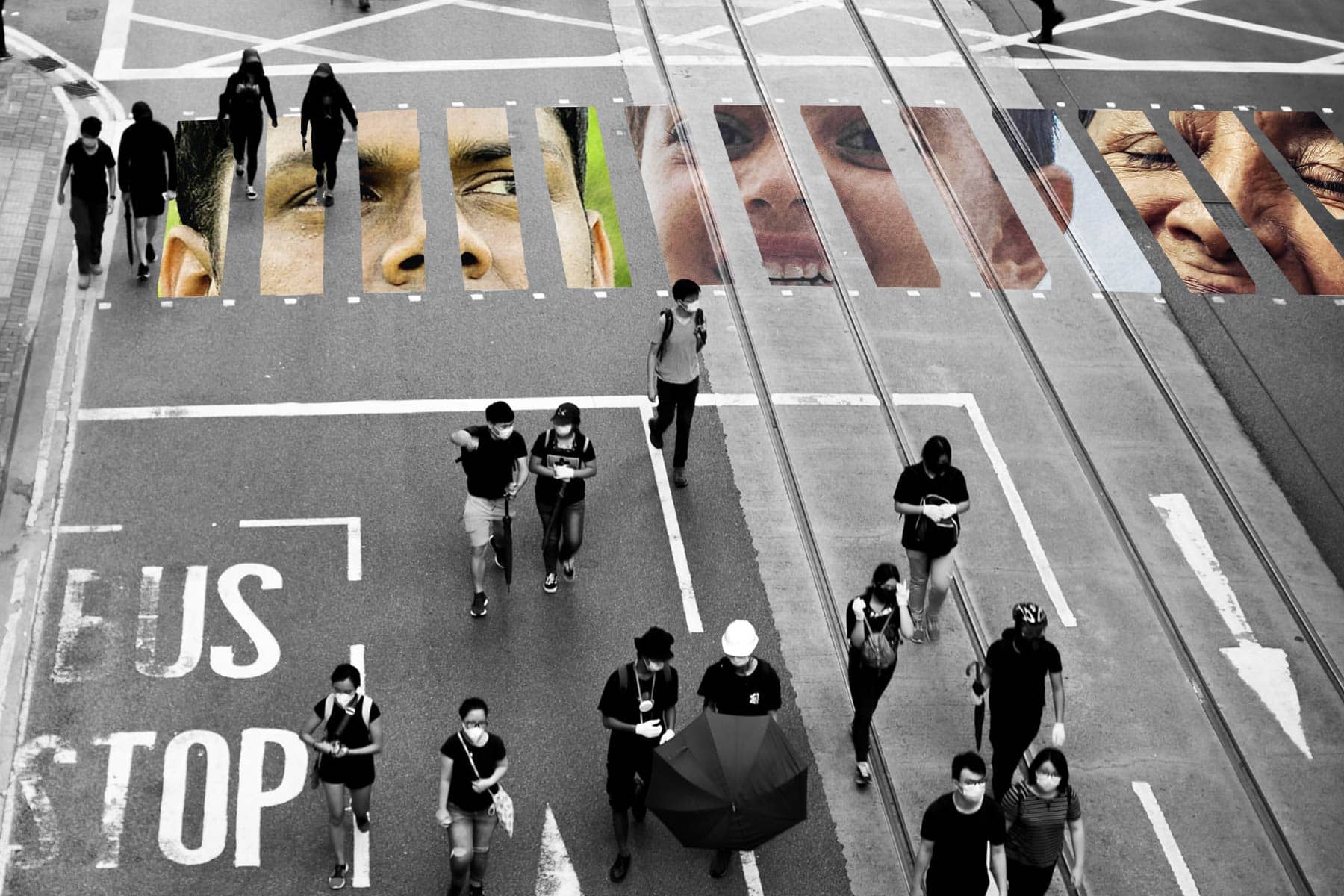by Mangai Balasegaram
In recent months, a global movement has sprung up challenging racism and slavery, incited by the killing of an African-American, George Floyd, by a policeman in May. Historic statues of slave traders were brought down, the Bank of England apologised for former governors having ties to slavery, while University College London is tracking companies with past links to the trade.
Yet absent from this reckoning was an examination of the indentured labour system, which essentially replaced slavery after it ended in the British Empire in 1833. This system had millions of Indians toiling in plantations on survival wages in all corners of the world – from Mauritius to Myanmar, and Fiji to Guyana – which brought in much revenue for the British Crown.
Indeed, many gave their lives. “Most of the coolies who crossed the seas a hundred years ago or more died without issue,” writes Hugh Tinker in his book on Indian workers in British colonies, A New System of Slavery.
Through this mass exploitation and industrialisation of Indian migrant labour, plantation owners and colonial powers accrued massive profits.
This chapter in history is not complete. New tragedies continue to unfold from the remnants of the system.
Today in Malaysia, the former Indian plantation community is an underclass drowning in poverty and struggling to cope with longstanding issues: broken families, single mothers, addiction, violence, gangsterism, and most of all, hopelessness. Crime is pervasive. Studies show that where opportunities for legitimate success are limited, the likelihood of criminal activity is higher, a link rarely recognised in Malaysia.
As a result of systemic oppression and racism, the community today sits on the margins of society, with few avenues for upward mobility. The parallels with the African-American underclass in the United States are evident.
A monstrous rotten system
The recruits were treated like slaves. When Indians came to British Guiana, they lived in the “Nigger Yard”. One chief justice there, J. Beaumont, described indentureship as “a monstrous rotten system, rooted upon slavery, grown in its worst abuses and only the more dangerous because it presented itself under false colours, whereas slavery (had) the brand of infamy written on its forehead.”
They had to work as hard as possible, often for nine to 10 hours a day, six days a week, writes Sandhu. The pay was so miserable – just nine cents a day in the 1860s and up to 18 cents in the 1900s – that workers were barely able to afford staple foods and had to eat “all the rubbish” available, writes Sandhu. Pay was sometimes withheld for unsatisfactory work while debts inflated, so extending the indenture. They, thus, were living “almost in slavery” or not far from it, says Sandhu.
Many died from “the most cruel conditions of treatment, malnutrition and misery,” writes George Netto in Indians in Malaya: Historical Facts and Figures. Death rates were very high in certain estates. Malaria killed many clearing jungles. Suicide was common, as it was for plantation slaves.
At Tali Ayer estate there was “systematic flogging”, as a 1910 report on conditions of indentured workers in the Federated Malay States by C.W.C. Parr noted. In 1874, 100 workers fell sick at Malakoff in Province Wellesley (modern day Seberang Perai), Tinker writes. An investigation found dirty, dilapidated huts “permeated with filth” and a “putrescent stink”. One old man, Ramasamy, was found beaten to death. J.M. Vermont, who owned the largest estate (4,500 acres) in Province Wellesley, wanted to make flogging legal.
The planters held “little affection or understanding” of Indians, quite unlike the “noble savage” aura painted around Malays, says Tinker. Indians were stigmatised as the “dregs of their country”: lowborn, even criminal, he says.
Some plantation owners were simply absent – a resident proprietor managed the estate for companies in Europe. Of the 11 European-owned estates in Province Wellesley, six belonged to a non-resident proprietor who had never visited Malaya.
In the 1870s, a bug, hemileia vastatrix, destroyed coffee crops in Ceylon, prompting planters to try tea, writes Tinker. Some planters moved to Malaya to grow coffee and one decided to try his luck with rubber, after receiving seedlings from the Singapore Botanical Garden. Rubber estates quickly grew. After Henry Ford popularised the motor car, demand for rubber exploded. It was then that Malaya really began to import Indian labour – in 1900 alone, 40,000 labourers came from Madras.
Sucked oranges



Scandals such as that at Malakoff caused a stir in Britain. Yet nothing fundamentally changed. Conditions remained bad. The chorus of critics, however, grew in the early 20th century, with the Anti-Slavery Society among these.
In South Africa, a young Indian lawyer, M.K. Gandhi, took up the issues of Indians there, including that of coolies, raising it to a burning issue in India. His struggle against South Africa’s oppressive laws became “a mass campaign of satyagraha”, Tinker writes. In 1910, indenture ended in South Africa amid a blaze of publicity, but with little attention in Malaya, where in any case, it was unable to provide enough labour.
Emigration drastically fell in northern India, but in the south, “assisted”, “free” immigration followed, through a recruiter, a kangani. Many problems arose here too, including deceit by kanganis. The Indian government sent an agent to record abuses which the Indian media prominently covered. But increasingly, these issues were overshadowed by the growing movement for Indian independence.
Family recruitment grew and in 1929, Indian births finally exceeded deaths in Malaya. Indians were given the three T’s – temples, toddy shops (a form of control and debt) and Tamil schools. But migrants were sent back in a downturn, as in the 1930s, to their villages in India. These villages bore the cost of caring for the young and the elderly, the “sucked oranges” repatriated when no longer productive.
Finally, in 1938, the Indian government placed a complete ban on all assisted immigration to Malaya, the “planter’s Raj”.
During the Second World War, some Indians were radicalised by figures such as Subhas Chandra Bose. Yet other plantation Indians suffered a dreadful fate in the “Death Railway” near Burma and the “Sweat Army” in jungles, working for Japanese ambitions. Hundreds and thousands died. One account said only three from 100 people in one group survived. Such losses were never acknowledged.




Indian Immigrant labourers coming into Malaya in 1880

Female Indian workers carrying pails of tapped latex to the factory, 1900

Independence… and worsening conditions
The supply of raw materials – sugar, coffee, rubber and tin – that enriched the British empire depended on the sweat and tears of Indian labour. The impoverished, indebted and often low-caste Indians who arrived on Malayan shores – initially under indentureship – suffered enormously. Their welfare was hardly a concern in the “glorified commercial enterprise” – as one commentator said –- that was British Malaya.
Wages were kept at subsistence level and bore little relationship to company profits or rubber prices, writes Michael Stetson in Class, Race and Colonialism in West Malaysia: The Indian Case. The lack of worker solidarity, due to their isolation on the estate, ensured control.
This “super-exploitation of a large mass of living labour” enabled European companies to extract “a large volume of surplus value”, says Stenson. To those who ran the plantations after the British, there was no incentive to change that.
Conditions actually worsened for Indians after independence. The actual income of rubber tappers decreased from RM3.40 per day in 1960 to RM3.14 in 1981 although productivity increased during this period,.
Prof Edmund Terence Gomez, a professor in political economy at University of Malaya, says the government became a major shareholder in plantation companies.
They could have given Indians a better deal. But they treated them the same way that the British did. The best way to make profits was to keep Indians as they were,"
Other communities progressed upwards, but no new middle class emerged from plantation Indians.
Why? Gomez believes there are two major reasons – education and economic institutions.
First, he says, schools in plantations were of very poor quality.
“This perpetuated the cycle of poverty. It was purposely done to have a continuous labour force.”
Secondly, economic institutions failed the community. Maika Holdings, for example, was set up in the early 1980s to uplift Indians and raise corporate assets. Some 66,000 Indians entrusted their savings – even pawning jewellery and taking loans when they didn’t have the means – in the hope of reaping handsome dividends. They never saw their money again. The company, discovered later to be riddled with corruption, was eventually liquidated.
“The state is highly interventionist in this country. But this further disenfranchised the community,” says Gomez. “They continued to be left behind.”
He points out that, by contrast, the Malay community benefitted from a well-run investment fund company – Permodalan Nasional Berhad – that provided good returns. Poor Malays in rural areas could also attend good residential schools that served as a stepping stone to universities.
In the 1980s, plantation owners began hiring foreign workers, which forced Indian workers to leave the estates. Many plantations then closed, evicting some 300,000 Indians. They didn’t just lose their jobs but their housing, childcare, community support and plots of land for farming. Moreover, the community had long remained isolated in the estate. Brutally, there was no programme to resettle them.
Workers were just given what was legally required – 20 days’ wages per year of service. With the average wage then at RM15, this worked out to just RM3,000 for 10 years of service. This was a mere pittance compared to the hundreds of millions made from the estate’s sale – RM600 million for Socfin’s Kuala Selangor estate; RM244 million for Coalfields Estate and RM244 million for Tanjung Malim Estate. Policies to provide workers alternative housing were never put in practice. With minimum literacy in Tamil and little savings, this placed the community in a tight corner.
Community in Crisis
Today, the community is in crisis and needs attention, says Klang MP Charles Santiago. Key problems are low wages, a lack of housing, and illness, particularly diabetes. Other issues are disintegrating family structures – with fathers away or in jail, alcoholism, children dropping out of school, unemployment, and a sense of hopelessness.
Supported by Selangor state government funds, Santiago’s office is providing empowerment programmes, especially for women. Training programmes covering tailoring, beauty treatments, henna design and biscuit-making, have proved successful, enabling women to earn between RM10,000 and RM12,000 during the Christmas and Deepavali periods, for example.
Santiago says more government intervention is needed but there is no leadership at the national level.
“They (Indians) have been left marginalised,” he says.
Some 40% of Indians are at the very bottom of the income ladder. Yet they have been omitted from poverty alleviation programmes. A 2017 study by the Centre for Public Policy Studies found that among major races in Malaysia, Indians have the lowest life expectancy, highest suicide rate and lowest relative home ownership. The fear, in pandemic-hit Malaysia, thus, is that things will get much worse.
Parti Sosialis Malaysia deputy chairman S. Arutchelvan believes a class perspective is needed.
“The issue is not about having more Indians leaders … During Pakatan Harapan, there were four Indian ministers but things were still the same. Only a system to uplift all races on a needs-based system can help Indians,” he says.
He says communal politics makes it hard for Indians to find jobs. In future, any assistance should go through government agencies, not political parties, and come under a Social Inclusion Act, he says. Also, Tamil schools need full funding, and programmes such as MySkills Foundation need to be enhanced and replicated.
MySkills works to provide, among other things, survival skills for youth at-risk, which offers a chance at breaking the cycle. Students admit that if not for the programme, they would be otherwise in jail, driving lorries, selling drugs or working at a car wash.
Education Ministry data indicates in 2011, some 7,000 children had dropped out of school before SPM exams. Surviving national schools in Bahasa Malaysia is challenging for Indian youth.
“Nobody looks at it from a human development perspective,” observes MySkills’s CEO Devasharma Gangadaran, adding schools have a “one size fits all” approach where teachers mainly focus on the syllabus.
But language is not the only problem; self-esteem is also a deep issue, as are low prospects for the future, all of which lead to a spiral of gangsterism and violence. The relatively high involvement in crime is matched by a high death rate in police custody: Indians account for almost one in four deaths in custody, despite making up only 7% of the population today.
Unless children are uprooted from this cycle, through programmes such as MySkills, the chances that they will follow their parents is 90%, says Devasharma.
It is tragic that this neglected and ill-treated community – which contributed so much to the wealth of the country and has endured so much – is now struggling to survive. Unless real efforts are made to address their deep and longstanding problems, the decay and devastation of this community will continue.
Share this story:

Edited by:
Edward Gomez

Eric Tee
Finally! A newsletter that keeps it nice and short.
At Between the Lines, we summarise and contextualise the most important Malaysian news for you.
Subscribe to our daily morning Email Newsletter for your bite-sized news of all that you need to know in Malaysia and beyond- for only RM10 a month! First month’s on us.







